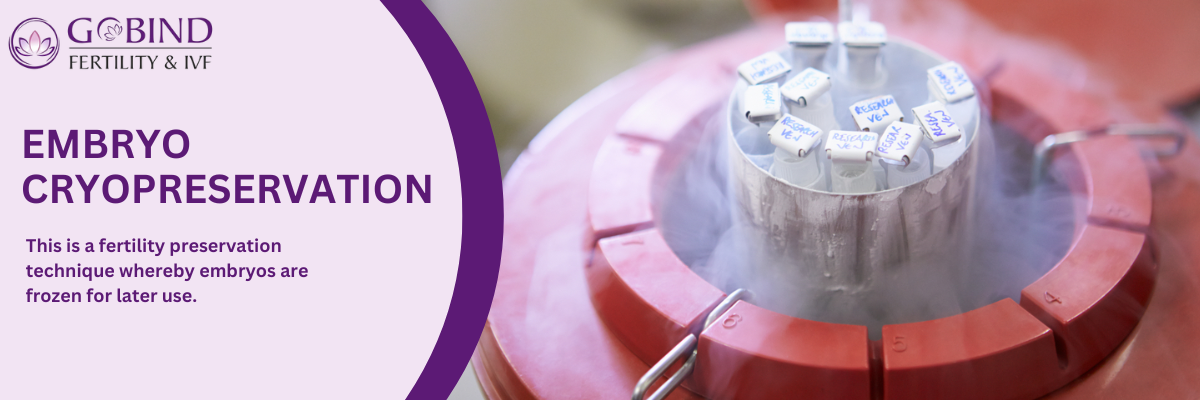

Embryo Cryopreservation
Embryo cryopreservation is the process of freezing and storing embryos for potential use in future fertility treatments.
Embryo Cryopreservation
One method used in assisted reproductive technology (ART) to preserve embryos for use in the future is called embryo Cryopreservation, or embryo freezing. High-quality embryos that are not transferred right away during an in vitro fertilization (IVF) cycle are vitrified, which exposes them to cryoprotectants and quickly freezes them in liquid nitrogen. Female’s endometrial lining is prepared and one or two embryos are transferred in the uterus. Frozen embryos can be kept for years and then thawed for transfer during a frozen embryo transfer (FET) cycle. By enabling several transfer attempts from a single egg extraction, reducing risks such as ovarian hyperstimulation, and optimizing embryo selection, embryo freezing increases the likelihood of becoming pregnant. Not every embryo, though, makes it through the freeze-thaw cycle. This method transformed ART by giving couples the chance to protect embryos, schedule treatments optimally, and increase overall success rates while lowering the dangers connected with fresh transfers of ovarian stimulation.
Modern embryo cryopreservation, commonly referred to as embryo freezing, is one of the assisted reproductive technology (ART) and fertility preservation services provided by GOBIND Fertility and IVF Center.
Our IVF lab quickly cools and cryopreserves embryos at the eight cell stage using vitrification freezing procedures. This procedure optimizes the chances of embryos surviving after thawing while reducing cellular damage.
There are several key benefits of embryo freezing:
- Allows transfer of embryos in more optimal cycle conditions
- Preserves extra embryos for potential future pregnancy attempts
- Provides fertility preservation options for medical/age reasons
- Helps reduce risk of ovarian hyperstimulation syndrome (OHSS)
- Enables genetic testing of embryos prior to transfer if desired
Frozen embryo transfers have similar pregnancy rates compared to transfers using fresh embryos. Our experienced embryologists carefully manage the freezing, storage, and thawing process for each patient's frozen embryos.
Embryo Cryopreservation FAQ:
Q: At what stage are embryos frozen?
A: We typically freeze embryos at eight cell stage (3rd day).
Q: How long can frozen embryos be stored?
A: With proper storage conditions and techniques, embryos can remain viable for several years.
Q: Does freezing increase risks or decrease success rates?
A: No, the vitrification method we use is extremely safe and effective at preserving embryos.
Q: How many embryos should be frozen during IVF?
A: This varies based on individual circumstances, but we follow guidelines to strike a balance.
Q: How are frozen embryos eventually used?
A: The frozen embryos can be thawed and transferred in a future frozen embryo transfer (FET) cycle.
Q: Is there additional testing available on frozen embryos?
A: Yes, we offer preimplantation genetic testing like PGT-A and PGT-M on embryos prior to transfer.
Q: Are there any legal/ethical considerations with embryo freezing?
A: We provide counseling on topics like custody rights and ethics around embryo storage/disposition.

















